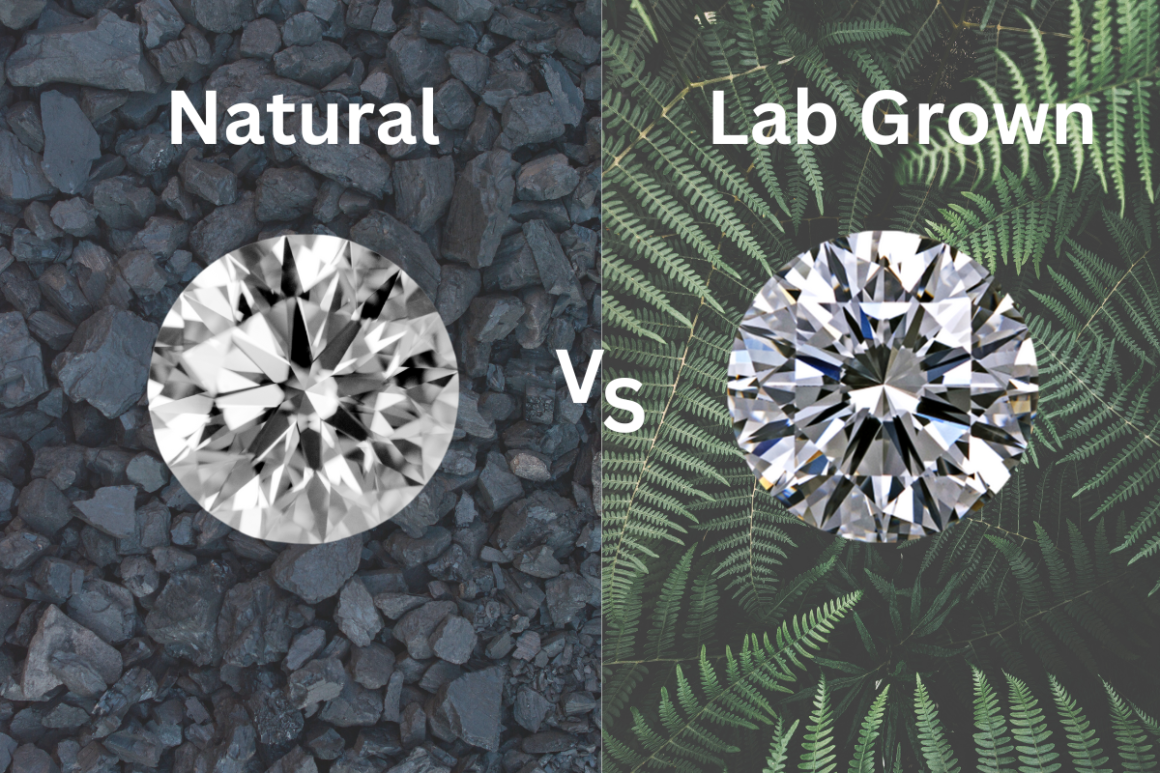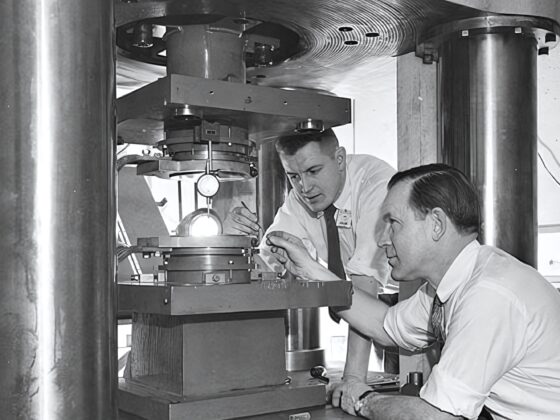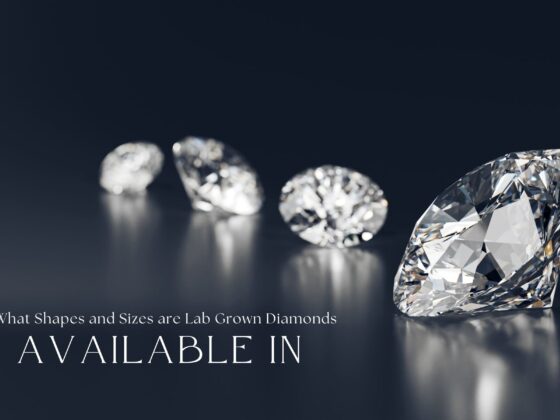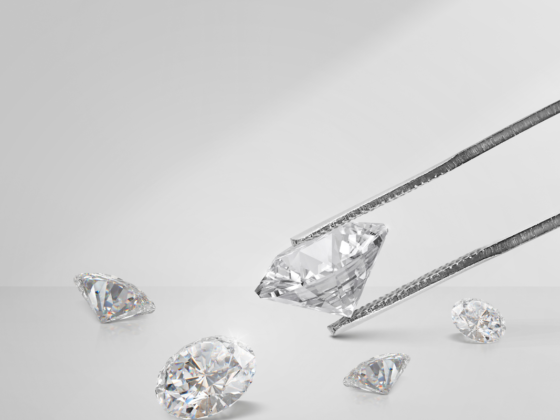The debate between lab-grown and natural diamonds presents a multifaceted examination of value, sustainability, and consumer ethics. Natural diamonds, celebrated for their geological history and rarity, stand in stark contrast to lab-grown diamonds, which provide a more affordable and environmentally conscious option.
As more consumers grapple with the implications of their choices, the conversation extends beyond mere aesthetics and price. What factors ultimately influence consumer preferences, and how might these evolving perceptions reshape the diamond industry landscape?
Understanding The Difference Between Lab Grown Diamonds Vs Natural Diamonds Formation Process:

While both lab-grown and natural diamonds are composed of carbon atoms arranged in a crystalline structure, it is still important to know how are lab grown diamonds made and from where the natural diamond comes, so, lab diamond formation processes differ significantly. Natural diamonds form over billions of years under extreme geological conditions, typically at depths of 150 to 200 kilometers beneath the Earth’s surface. The diamond crystallization process occurs when carbon atoms undergo intense pressure and temperature, allowing them to bond in a specific arrangement, ultimately leading to the formation of diamonds.
In contrast, cultured diamonds are created through artificial processes that replicate these natural conditions. The two primary methods are High-Pressure High-Temperature (HPHT) and Chemical Vapor Deposition (CVD). In HPHT, carbon is subjected to high pressure and temperature, mimicking the natural environment, while CVD involves the vaporization of carbon-containing gases, allowing carbon atoms to deposit onto a substrate and crystallize over time.
Though both types of diamonds share identical structural and chemical properties, physical properties, and optical properties, the stark differences in their formation processes underscore the unique histories behind each. Understanding these processes not only enhances appreciation for diamonds but also informs consumer choices regarding authenticity and origin.
Comparing Cost and Value
As consumers seek the perfect diamond, understanding the cost and value differences between lab-grown and natural stones becomes essential. Laboratory-grown diamonds typically offer significant price advantages, often costing 20-40% less than their natural counterparts. Many of you probably wonder why are lab-grown diamonds cheaper. This cost efficiency arises from the controlled manufacturing processes and shorter supply chains associated with lab-grown stones, which reduce overhead and extraction costs.
Market trends indicate a growing acceptance of lab diamonds, particularly among millennials and younger consumers who prioritize ethical considerations and budget-friendly options. As the demand for man made diamonds increases, it is expected that their prices may stabilize or even decrease further, making them an increasingly attractive choice.
In contrast, real diamonds maintain a higher price point influenced by their rarity, historical significance, and established luxury market positioning. Despite fluctuations in consumer preferences, natural diamonds often retain their value better over time, making them a traditional choice for investment.
Ultimately, the choice between lab-grown and earth mined diamonds hinges on individual priorities, whether they be budget, ethical considerations, or investment potential. Understanding these price differences and market trends is crucial for making an informed decision.
Evaluating Environmental Impact
Considering the growing concerns about climate change and sustainability, the environmental impact of diamond sourcing has become a significant factor for consumers. Natural diamond mining practices often involve extensive land disruption, leading to ecosystem disruption and biodiversity loss. The extraction processes can result in significant resource consumption, including water and energy, which exacerbate environmental degradation.
In contrast, laboratory-grown diamonds typically exhibit a lower carbon footprint. Their production processes often utilize renewable energy sources, reducing overall energy usage. Additionally, man made diamonds require fewer natural resources, minimizing the strain on ecosystems. Waste management is another critical aspect; while natural mining generates considerable waste, lab-created diamonds produce much less, contributing to a more sustainable approach.
However, it is essential to note that both methods have their environmental challenges. Natural diamond mining can lead to long-lasting environmental scars, while lab diamonds still rely on industrial processes that can have their own ecological impacts.
Consumers must weigh these factors carefully when considering the environmental implications of their diamond choices. Ultimately, the growing transparency around sourcing practices empowers consumers to make informed decisions aligned with their values.
Assessing Quality and Aesthetics
When evaluating diamonds, both natural and lab-created diamonds options are often assessed based on their quality and aesthetic appeal. The primary determinants of a diamond’s quality include the four Cs: carat, cut, clarity, and color. Brilliance factors such as the diamond’s cut significantly influence how light interacts with the stone, ultimately affecting its sparkle and overall visual impact. A well-cut diamond will exhibit superior brilliance, regardless of its origin.
Color grading is another critical aspect in assessing a diamond’s quality. Natural diamonds can exhibit a wide range of colors, from completely colorless to shades of yellow or brown, while lab-made diamonds are engineered to achieve specific color outcomes. Both types can achieve similar color grades, yet the consistency of color in lab diamonds may be more controlled.
Ultimately, personal preference plays a significant role in the evaluation process. While some consumers may favor the unique characteristics of natural diamonds, others may be drawn to the precision and uniformity of lab-grown alternatives. By understanding the brilliance factors and color grading, potential buyers can make informed decisions based on quality and aesthetic appeal.
Ethical Considerations in Sourcing
The ethical implications surrounding the sourcing of diamonds have gained significant attention in recent years, particularly as consumers become more aware of the environmental and social impacts associated with traditional diamond mining.
The diamond industry has long been scrutinized for its sourcing practices, which can lead to severe ecological damage, human rights violations, and funding for conflict. Consequently, the rise of lab-grown diamonds offers a viable alternative that alleviates many of these concerns.
Lab-created diamonds are produced in controlled environments, significantly reducing the carbon footprint and eliminating the risk of contributing to unethical mining practices. As consumer perception shifts towards sustainability and ethical considerations, many buyers are prioritizing transparency and responsible sourcing when making their purchasing decisions.
Moreover, brands that emphasize ethical sourcing can enhance their reputation and appeal to a conscientious demographic. By adopting responsible sourcing practices, the diamond industry can align itself with modern values of sustainability and social responsibility, ultimately fostering a more ethical marketplace.
As consumers increasingly demand integrity in their purchases, the distinction between lab-grown and natural real diamonds becomes not just a matter of quality, but also one of ethical accountability.
FAQs
How Do Lab-Grown Diamonds Affect Resale Value?
Resale value is significantly influenced by resale trends and market perception. Laboratory-grown diamonds typically depreciate faster than natural diamonds due to consumer preferences, leading to lower resale values and a narrower market for potential buyers.
Can Lab-Grown Diamonds Be Certified by Gemological Institutions?
Lab-made diamonds undergo a rigorous certification process by accredited gemological institutions, adhering to established gemological standards. These assessments ensure the quality, authenticity, and characteristics of the diamonds, providing consumers with reliable information regarding their purchases.
Are There Differences in Durability Between Lab-Grown and Natural Diamonds?
The durability of diamonds primarily stems from their crystalline structure. A characteristics comparison reveals that while both lab-grown and natural diamonds share similar hardness, potential structural differences may influence their long-term resilience under varying environmental conditions.
What Are the Common Uses for Lab-Grown Diamonds Outside of Jewelry?
Laboratory-grown diamonds are increasingly utilized in various industrial applications, including cutting, grinding, and drilling tools, due to their durability. Additionally, their ethical sourcing appeals to businesses prioritizing sustainability and responsible practices in their operations.
How Do the Two Types of Diamonds Differ in Terms of Sparkle?
The sparkle of diamonds primarily depends on cut quality and light performance. A well-cut diamond maximizes light return, enhancing brilliance and fire, regardless of its origin, thus impacting the overall visual appeal significantly.
Conclusion
The comparison between lab-made diamonds and natural diamonds reveals distinct advantages and considerations for consumers. Laboratory-grown diamonds present a more affordable and environmentally sustainable option, while natural diamonds are prized for their rarity and historical significance. Ultimately, the choice between these two types of diamonds hinges on personal values regarding cost, environmental impact, and ethical sourcing. As consumer preferences evolve, understanding these differences will be essential for informed decision-making in the diamond market.








